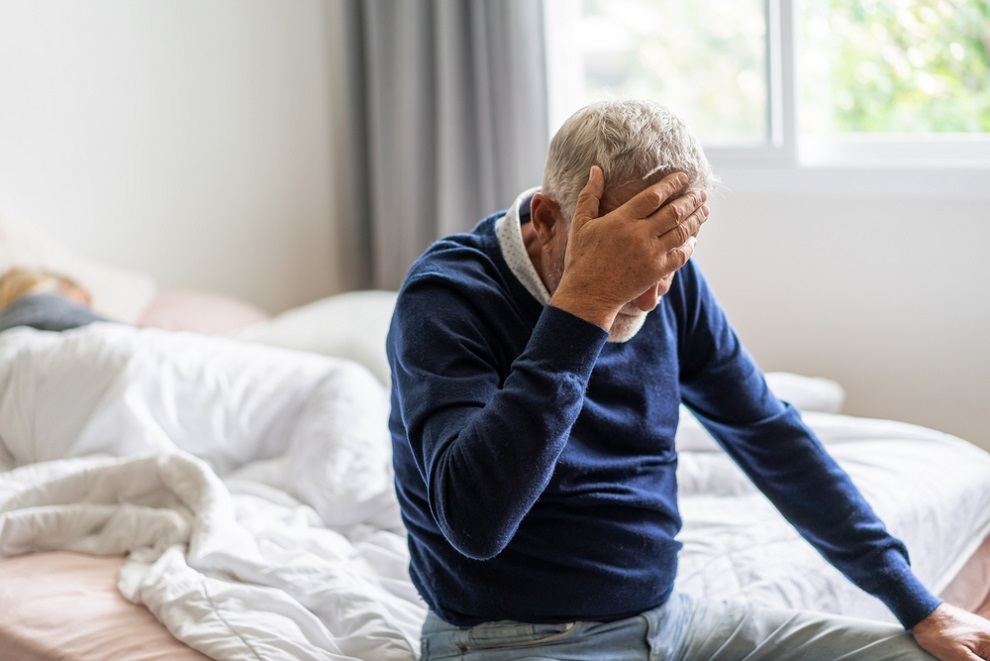What if we told you that the key to aging more gracefully isn't in a jar of cream or a vial and a needle?
As more people seek natural ways to support healthy aging, interest in non-invasive treatment options continues to rise. One therapy that is quickly becoming part of the conversation is red light therapy.
Red light therapy for anti-aging is not just a trend. It's backed by growing research. This therapy involves using low-level wavelengths of light, usually red or near-infrared, that gently penetrate the skin. Because of how it works, red light therapy falls under the broader category of light therapy, which uses various light sources to support wellness.
The benefits of red light are drawing attention from dermatologists, athletes, and everyday users alike. A clinical study found that after 30 sessions, participants experienced noticeable improvements in their skin tone and an increase in collagen density. Two months of consistent use led to even further enhancements.
The study reported a 12.5% increase in skin elasticity and a 32.7% improvement in skin tone uniformity, both of which are significant indicators of healthier, more youthful-looking skin. These results point to more than just hype; they suggest potential long-term support for aging skin.
This blog explores how red light therapy works, its connection to skin health and cellular repair, and why it is becoming a popular treatment for those seeking genuine, visible results without surgical procedures.

What Is Red-Light Therapy?
Red light therapy began as a NASA experiment in the 1990s. Astronauts used it to grow plants in space and later to speed up wound healing. Since then, the technology has evolved into what we now call low-level laser therapy, also known as photobiomodulation. Both terms refer to the use of specific light wavelengths that help in stimulating collagen production without damaging tissue.
This form of light therapy uses wavelengths ranging from 630 to 850 nanometers. These fall within the red and near-infrared parts of the light spectrum. The light penetrates the skin and reaches the cells, targeting the mitochondria, which are responsible for energy production. The result is increased ATP, the fuel that powers nearly all cellular activity. This process supports tissue repair and reduces inflammation.
Red light therapy devices come in various forms. People use LED light panels, handheld wands, red light therapy masks, and even full-body beds. This red light therapy device uses light-emitting diodes, often referred to as LEDs, to deliver visible light and infrared light to the skin. The delivery method depends on the area being treated and the patient's desired effects.
Multiple studies have explored how red light photobiomodulation interacts with the body and its benefits, which we will discuss later in the blog. However, it's essential to understand how red LED light therapy works so that users can set realistic expectations. It's not about instant results but about encouraging natural healing over time.
Science Behind Aging and Cellular Decline
Aging isn't just about fine lines or wrinkles. It's a deeper, slower shift in how the body repairs and regenerates. As we age, our skin begins to lose its structural support from within. One reason is reduced collagen production, which makes the skin less firm and more prone to sagging.
At the cellular level, the changes are more significant. Skin cells regenerate more slowly. Mitochondria, often called the cell's powerhouse, become less efficient. This leads to less energy being produced for repair and maintenance. The body also deals with more oxidative stress, which breaks down healthy tissue over time.
These changes are part of the natural aging process, but researchers have found that targeting mitochondria may help slow down this process. That's where red and near-infrared light comes in. When this light penetrates the skin, it effectively reaches the mitochondria and boosts cellular function. This increase in light energy allows cells to function more like they did when we were younger.
Improving mitochondrial activity can support healthier, more resilient skin. The idea is not to reverse aging overnight, but to support the skin in aging more effectively. Red and near-infrared light therapy can also help by penetrating the skin's surface and addressing the issue at its root cause.
How Red-Light Therapy Supports Healthier, Younger-Looking Skin
Red light therapy for anti-aging has gained attention for more than just giving you a skin glow. It's being studied for its support of healthier, younger-looking skin. As interest grows in non-invasive treatments, many are turning to light-based solutions that do more than treat the surface. Below are some reasons why red light can support overall skin rejuvenation:
Stimulate Collagen and Elastin for Firmer Skin
Red light therapy can support the skin's natural ability to produce collagen. Collagen is a structural protein that preserves the skin's firmness and resilience. As we age, collagen production slows down. This often causes fine lines, reduced skin elasticity, and looser skin.
By using red and near-infrared wavelengths, the therapy helps light penetrate the skin and stimulate fibroblasts. These cells play a crucial role in producing collagen and elastin. Over time, red light therapy can help reverse signs of skin aging and restore firmness.
Calm Inflammation and Sensitive Skin
Red light therapy may also help reduce inflammation. This benefits those with ongoing skin conditions, such as rosacea, eczema, or acne. The light energy promotes healing in irritated areas and supports a calmer, clearer complexion.
By improving circulation, red light also enhances the delivery of nutrients to the skin. This helps improve both skin texture and tone. People dealing with multiple skin concerns, such as redness, fine lines, and dark spots, can find this treatment helpful over time.
Addressing More Than Just Wrinkles
Red-light therapy doesn't just focus on fine lines. It supports overall skin rejuvenation, targeting skin tone, texture, and firmness. Some users also report improvement in dark spots and thinning hair. That's because the therapy supports hair growth and better scalp health. This makes red light therapy a versatile option for treating multiple skin conditions, not just signs of aging.
How Red-Light Therapy Supports Deeper Cellular Aging
Red-light therapy is more than a skin-deep treatment. Its potential extends beyond surface-level benefits and into the body's cellular processes. The way light interacts with cells may influence how the body handles aging from the inside out.
Boost Mitochondrial Health
One of red light's most studied effects is its ability to support mitochondria. When exposed to red light, photobiomodulation can increase cells' adenosine triphosphate (ATP) production. ATP is the energy currency that helps cells repair and function. Higher ATP levels mean better energy availability, which supports cell regeneration and reduces fatigue at the cellular level.
Reduce Oxidative Stress
Aging skin and tissue often show signs of oxidative stress, where harmful free radicals damage cells. Red light therapy helps by enhancing the body's antioxidant defenses. Red and near-infrared light may reduce oxidative stress markers and slow down DNA damage, a prominent sign of aging. This ability to slow oxidative strain can support skin health and overall vitality as we age.
Neuroprotective Benefits of Red Light Therapy
Some early studies suggest red light may support cognitive health. Improvements in attention and memory may also be seen in older adults who received red light therapy on the scalp. While studies on its effectiveness are still in the early stages, they suggest a possible role in reducing brain fog and supporting neurological aging.
Support Muscle Recovery and Bone Health
Aging doesn't just impact the mind but also movement and strength. Red-light therapy plays a supportive role in muscle recovery. It relieves pain and improves circulation in tissues, which reduces inflammation and supports joint comfort. Additionally, red light helps aging adults maintain physical mobility.
How Red-Light Therapy Supports Overall Health in Aging Adults
Red light therapy is gaining attention not only for skin health but also for its broader wellness benefits. Here are some of the other areas where red light therapy has proven to be effective:
Better Sleep Quality
Sleep quality often declines with age. Disruptions in melatonin production and a weakened circadian rhythm are common. Red-light therapy may help by improving the body's ability to regulate its internal clock.
A small study published in the Journal of Athletic Training found that female athletes who received 30 minutes of red-light therapy before bed experienced better sleep and increased melatonin levels. While the sample was limited, the results highlight its potential for improving sleep patterns in aging individuals.
Hormonal Support in Aging Men
Testosterone levels gradually drop as men age, often affecting energy, mood, and libido. Red-light therapy can support hormonal balance. Preliminary evidence suggests that it can stimulate Leydig cells, which are responsible for testosterone production in the testes. While more clinical studies are underway, anecdotal and early lab findings support its potential in this area.
Mood and Mental Health
Mental wellness plays a significant role in aging well. Red-light therapy may influence mood by stimulating brain activity. It has also shown reductions in depressive symptoms and anxiety, likely tied to improved brain oxygenation and inflammation reduction. These improvements may also contribute indirectly to better sleep quality and hormonal balance.
Eye Health with Caution
Emerging research is exploring whether red-light therapy may benefit age-related macular degeneration (AMD). A study published in Scientific Reports found that exposing the eyes to deep red light for three minutes daily activated mitochondria in the retina.

Fitting Red-Light Therapy into Your Routine
Red-light therapy has become easier to access with the rise of at-home red light therapy devices. Whether you prefer in-office treatments or a home setup, you need to understand how to use red-light therapy safely and effectively.
How Often to Use Red Light
Most people benefit from 10 to 20 minutes per session, about three to five times a week. You can adjust based on your goals and how your skin or body responds. Many users transition to maintenance treatments after a few weeks of consistent use. Staying regular with sessions often yields better, longer-lasting results.
Select a Red Light Device That Works
Look for an FDA-cleared device that uses a mix of red (660 nm) and near-infrared (850 nm) wavelengths. These are known for their ability to reach deeper tissues. Red-light therapy panels are ideal for full-body use, while masks work well for facial treatments. Either option can be effective when used correctly.
Safety and Precautions
Red light therapy is generally safe, but some precautions should be taken. Women who are pregnant, taking photosensitizing medications, or have certain skin conditions like skin cancer and eczema should consult a doctor first. Always wear protective goggles when using a red light therapy device near the face. Avoid overuse, as more light isn't always better.
At-Home vs. In-Office Treatments
At-home red light devices are convenient and cost-effective in the long run. You can use them on your schedule, which helps with consistency. However, in-office treatments offer stronger equipment and are supervised by a licensed skincare professional. These sessions often cover larger areas or target more complex skin concerns. That said, regular office visits may not be practical or affordable for everyone.
Conclusion
Red light therapy continues to gain attention for its ability to support skin health, energy levels, and overall wellness. This non-invasive treatment stimulates your cells, improving their function and repair over time.
Research shows that it may help improve skin tone, reduce inflammation, and even support better sleep and mood. It's a promising addition to any healthy aging routine. That said, results don't appear overnight. Like anything worthwhile, it takes consistency.
When used correctly and regularly, red light therapy fits easily into your daily routine. It's safe for most people and works best when combined with other lifestyle habits that support long-term health. Before starting, check with a healthcare provider, especially if you are taking medication or managing a specific condition.
And if you've noticed changes in your energy, mood, or strength, it may be time to look beyond surface-level solutions. That's where Male Excel comes in. Our testosterone replacement therapy is designed for men who want to regain vitality, improve muscle growth, and sharpen focus. If you're serious about aging, this is one step worth exploring.
References
1. Couturaud, V., Fur, M. L., Pelletier, M., & Granotier, F. (2023). Reverse skin aging signs by red light photobiomodulation. Skin Research and Technology, 29(7). https://doi.org/10.1111/srt.13391
2. Zhao, J., Tian, Y., Nie, J., Xu, J., & Liu, D. (2012). Red light and the sleep quality and endurance performance of Chinese female basketball players. Journal of Athletic Training, 47(6), 673-678. https://doi.org/10.4085/1062-6050-47.6.08
3. Shinhmar, H., Hogg, C., Neveu, M., & Jeffery, G. (2021). Weeklong improved colour contrasts sensitivity after single 670 nm exposures associated with enhanced mitochondrial function. Scientific Reports, 11(1). https://doi.org/10.1038/s41598-021-02311-1





